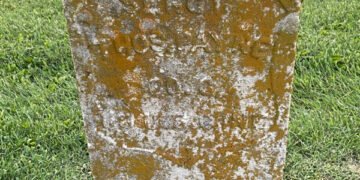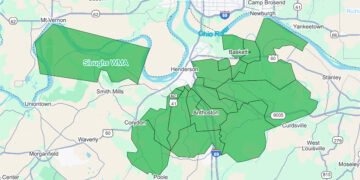(This column was originally published April 2 in the April print edition of the Hendersonian.)
Kentucky is a great place to forage wild mushrooms. We are fortunate to have extensive forest that are perfect homes to several edible fungi, including chanterelles, lion’s mane, chicken of the woods, and oyster mushrooms. One of the more popular fungi commonly found is the morel.
Morels typically show up between March and April in western Kentucky. Morels tend to prefer 60-to-70-degree days and nighttime temperatures above 40 degrees. Soil temperatures affect timing also and should be between 50 and 60 degrees. They typically can be found in undisturbed forest areas and sometimes along fencerows. Most seasoned hunters have hunting grounds that are a closely guarded secret so good luck asking other hunters where to find them. Some hunters target certain areas that may include elm trees or apple trees as more likely areas to find morels. Often, experienced hunters seek out older growth forests that include ash trees or hickory trees.
The morel spore develops mycelium in the organic matter on top of the soil throughout the year and when conditions are right in the spring, the fruiting body (the actual mushroom), will very quickly develop; sometimes as quickly as two or three days. The mushrooms also live a short life, often lasting only a couple days. Most experienced hunters will expect to find morels year after year in the same spot. This makes sense as the mushroom produces spores each spring and the spores fall to the ground to grow again. But….hunters also report that for whatever reason, favorite hunting spots can dry up and quit producing morels with no good explanation.
Finding a good hunting spot takes time and patience. You may need to search areas several times during March and April to find morels or rule out that particular spot. Of course, you can hunt property you own but make sure to ask permission to hunt property you do not own. Many public lands are open to hunt morels, but many do not allow harvesting, so check first to make sure.
If you are lucky and locate a morel hunting ground, harvesting is quite simple. Carry a small bag, cloth or paper, to put them in. Too big of a bag and the mushrooms will crush themselves under their own weight. Morels are delicate and need to be handled with care. When you get the morels home, a common practice is to soak them in saltwater for five to 10 minutes. The salt will rid the mushrooms of ants and other insects. Gently pat the mushrooms dry after their salt bath. Morels will typically keep in the fridge for about a week. Make sure to keep them slightly moist.
There are several ways to prepare morels. Most common is a corn meal batter and skillet fried. Some hunters will simmer morels in butter and add to pasta dishes. A quick online search will provide several other ways to prepare morels and provide many recipes.
If you decide to hunt for the mysterious morel, there are risks. As with any mushroom, it is imperative that you are proficient at identification. Many mushrooms have some look-alikes, and the morel also has one called the ‘false morel’. Do some research, read a book, and talk to some experienced hunters before you embark on your morel journey.
In my youth, I spent many days in early spring exploring nature, dodging snakes, and harvesting treasured morels. Make sure you have insect repellent for ticks and ensure you have permission to harvest on the property you choose. Good luck!
P. Andrew Rideout is the UK extension agent for horticulture and can be reached at pandrewrideout@uky.edu. The Henderson County Extension Office’s phone number is (270) 826-8387.



















